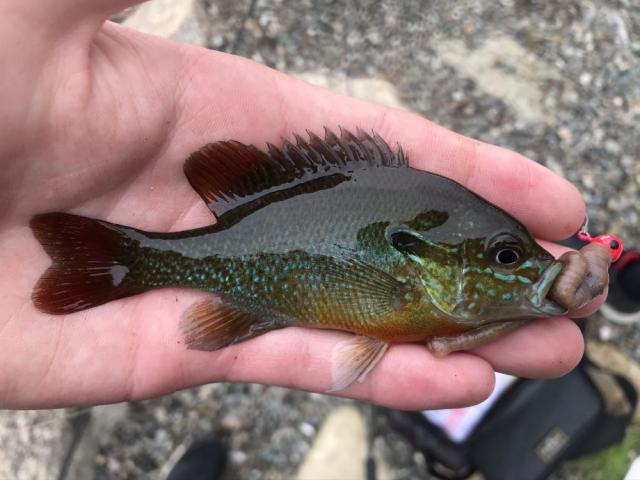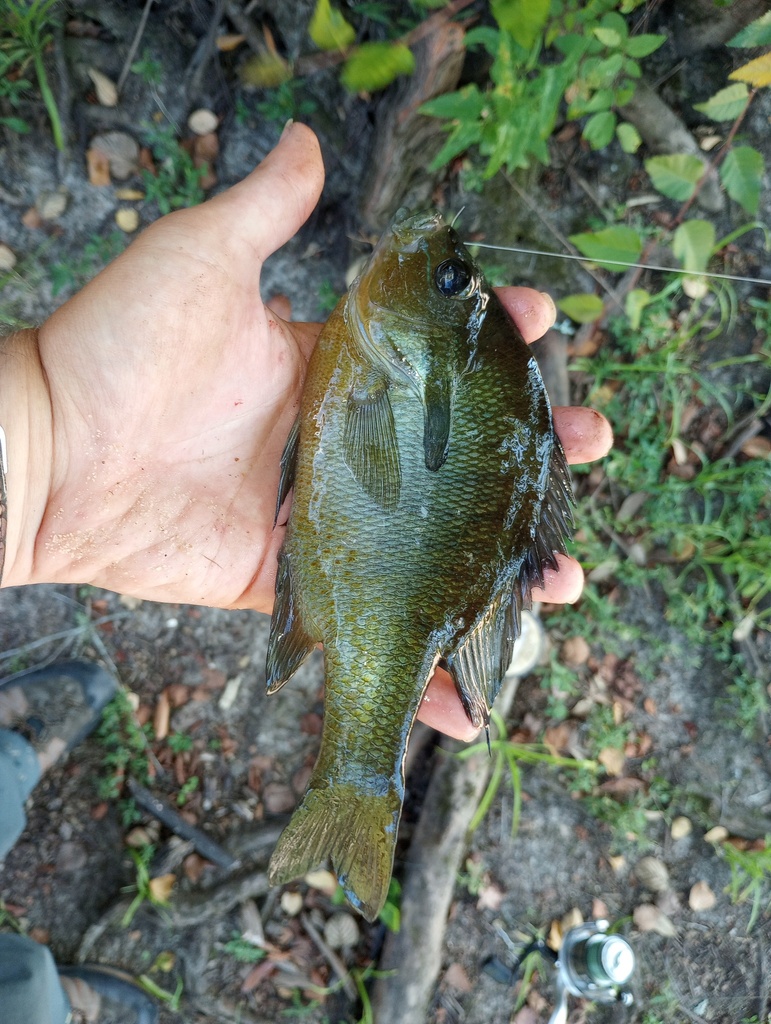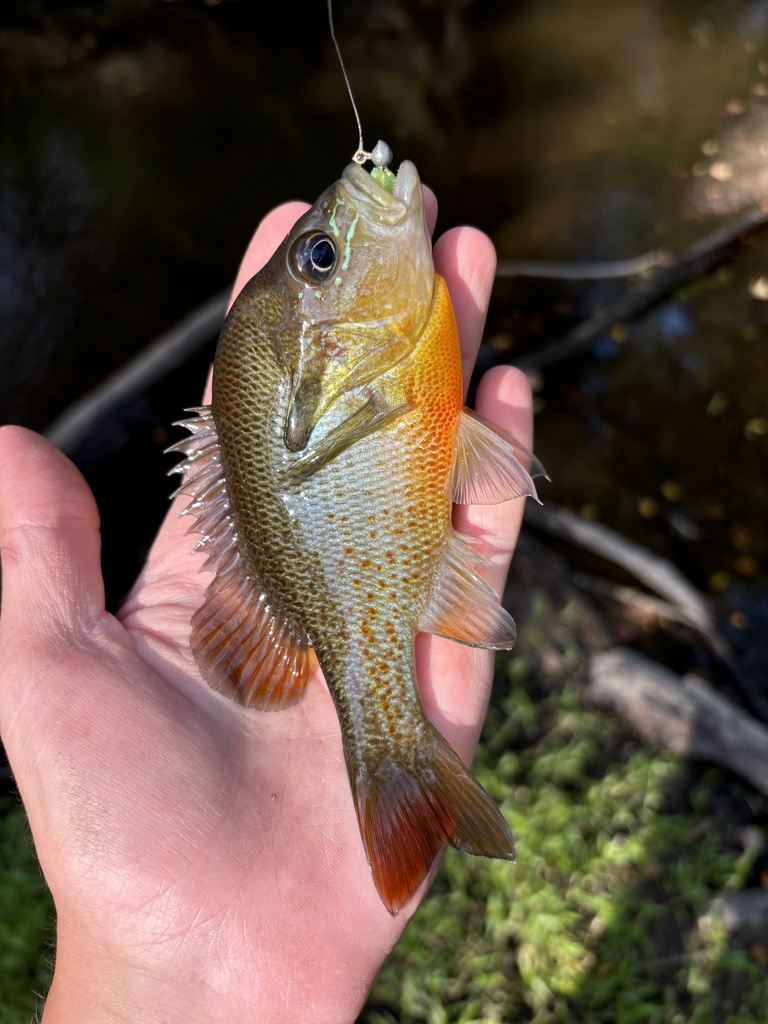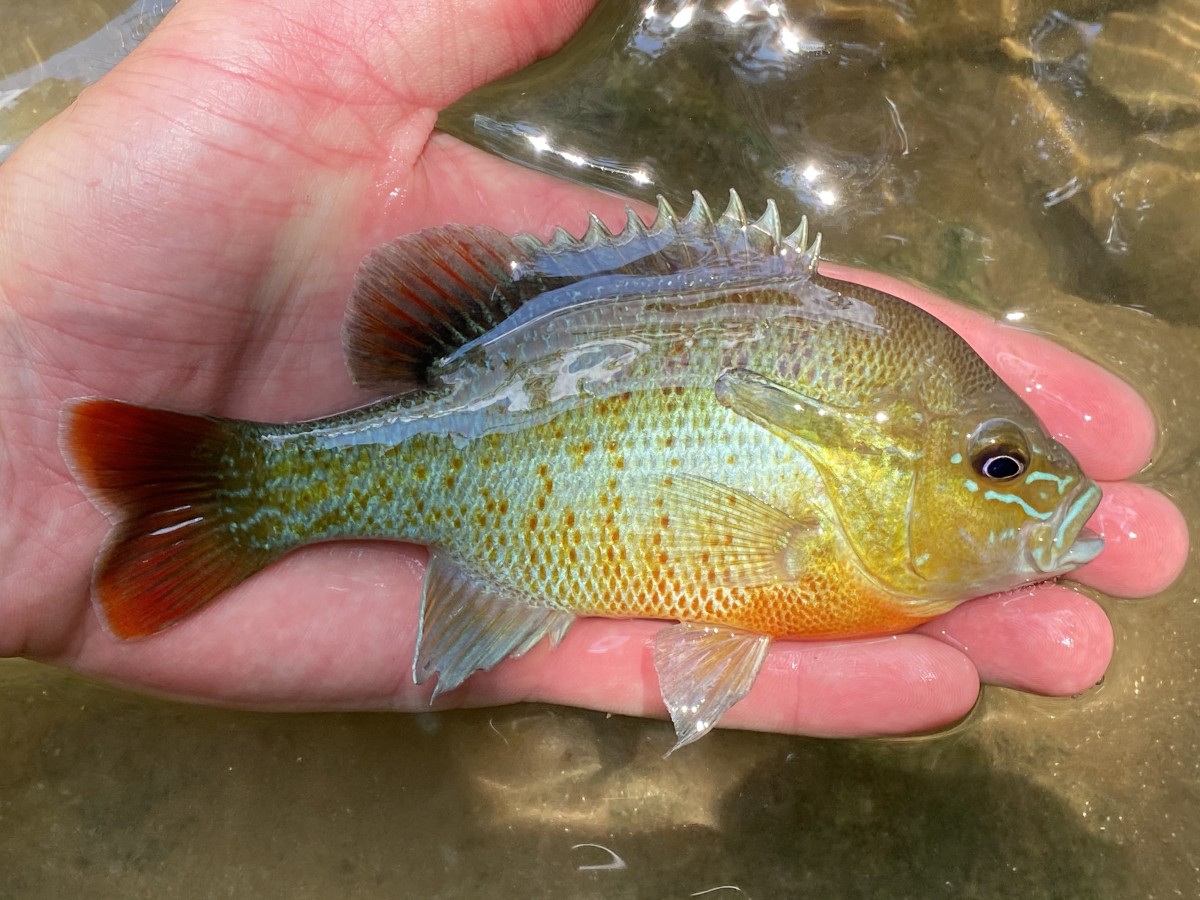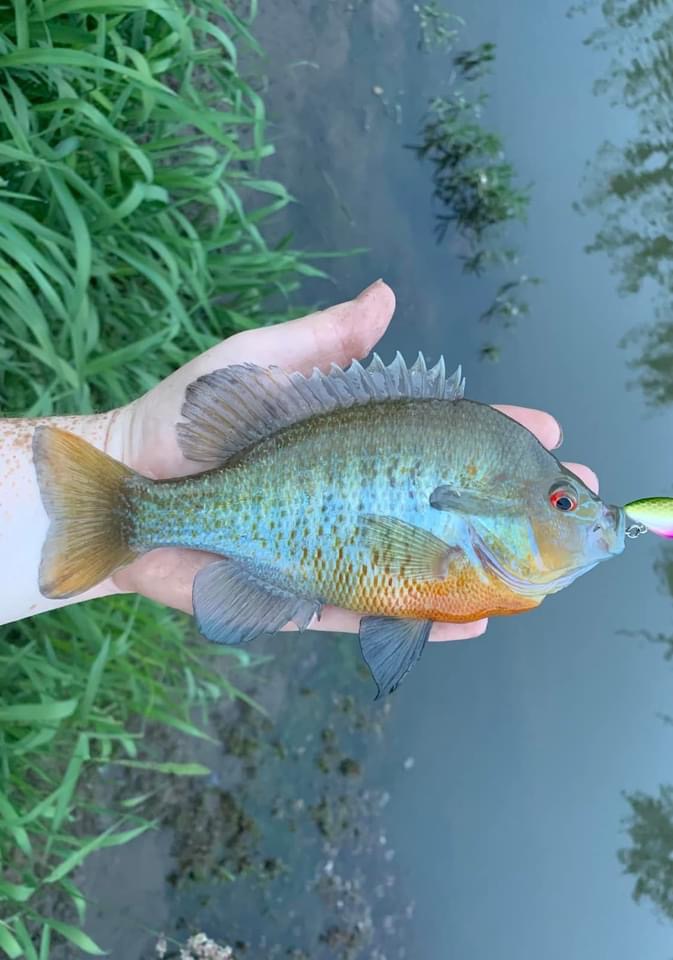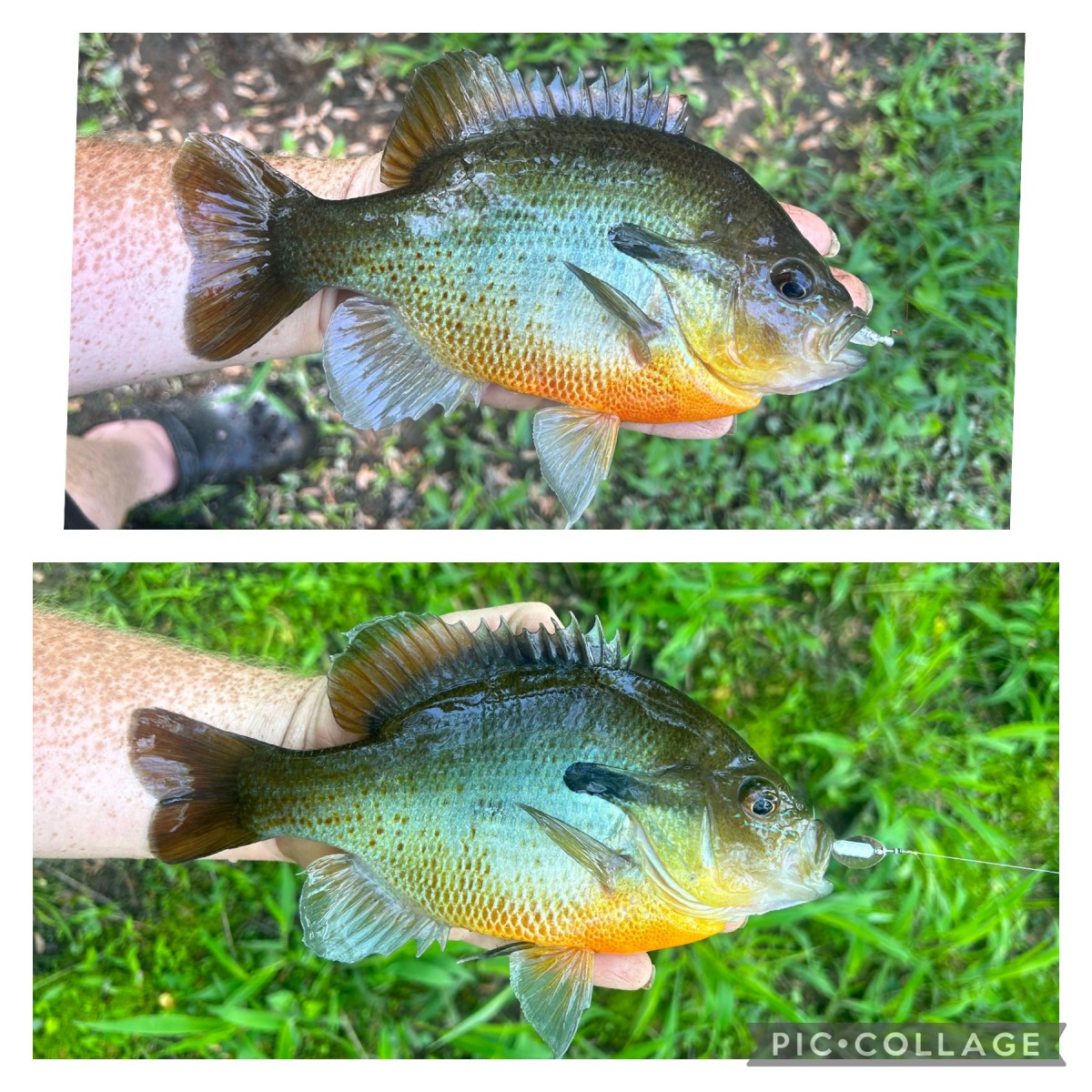Redbreast sunfish
(Lepomis auritus)
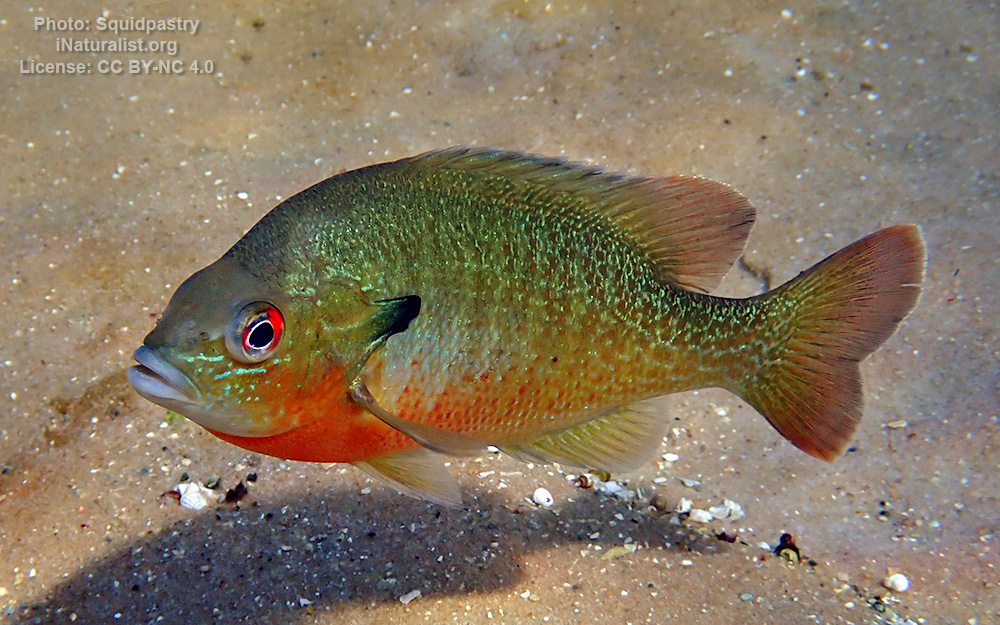
Classification
General data
Lepomis auritus is a sunfish with a deep body that is moderately compressed. This species has 42-51 lateral-line scales and the dorsal fin has 10-11 spines and 10-12 rays. Redbreast Sunfish has 9-10 anal fin rays, 13-15 pectoral fin rays, and 9-12 gill rakers. Coloration can be described as a blue-green shading on its dorsal areas that grades into a yellowish color on its breast, belly and lower head (bright red in breeding males). The soft dorsal fin and the upper lobe of the caudal fin have yellow margins that become bright orange to scarlet on nuptial males. Bright blue vermiculations usually are apparent on the cheek and preorbital areas. Young-of-the-year up to 25 mm may have about 12 vertical dark bars on sides, but these bars are faint or absent in larger specimens (Etnier & Starnes 1993). Lepomis auritus can be distinguished from most other sunfish species by its long opercular lobe (Gautreau & Curry 2012). However, Longear Sunfish L. megalotis and Northern Sunfish L. peltastes also have long opercular lobes.
Redbreast Sunfish larvae can be distinguished from other Lepomis spp. larvae by their relatively large hatching size and large coiled gut, which becomes more apparent when fish reach 7.9 mm in total length.
Size: 24 cm
Native Range: Atlantic and Gulf Slope drainages, from New Brunswick to central Florida, and west to the Apalachicola and Choctawhatchee drainages, Georgia and Florida (Page and Burr 2011)
This species is not currently in the Great Lakes region but may be elsewhere in the US.
Lepomis auritus has been transplanted to and become established in Germany, Italy, Mexico, and Puerto Rico.
